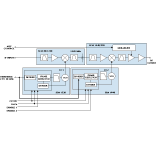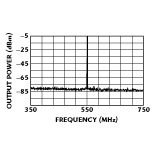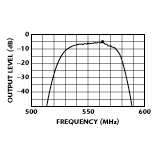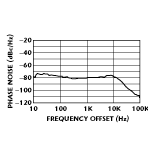A 2 kW Solid-state Pulse Amplifier
Wavesat Te´le´com Inc.
St-Laurent, Quebec, Canada
The model WPA-129063-53PR solid-state power amplifier system is a stand-alone, 19" rack-mount unit capable of amplifying RF pulses to a level in excess of 2000 W peak power with five percent duty cycle (100 W average power). Control and protection functions are featured as well as monitor and display capabilities. The protection functions include SWR circuitry, over/under temperature, pulse width and overdrive protection. The system has a forward power readout and calibrated sample ports, and power-supply voltage and/or current monitoring. The amplifier system features front-panel output power adjustment (manual step attenuator) and RF blanking controls, and an AC primary breaker.
System Configuration
The system is composed of various modules and blocks, as shown in Figure 1 .  The RF driver modules include class A and class C drivers. The class A driver amplifier utilizes GaAs FET technology while the class C booster and driver amplifiers use bipolar devices. The class A driver feeds the class C driver, which features a split output
The RF driver modules include class A and class C drivers. The class A driver amplifier utilizes GaAs FET technology while the class C booster and driver amplifiers use bipolar devices. The class A driver feeds the class C driver, which features a split output  that drives the two high power booster amplifier stages. Both drivers are mounted on a common heat sink with an isolator between them for SWR protection, as shown in Figure 2 .
that drives the two high power booster amplifier stages. Both drivers are mounted on a common heat sink with an isolator between them for SWR protection, as shown in Figure 2 .
The two class C booster amplifiers each deliver more than 1000 W of peak power. The boosters are individually SWR protected via high power drop-in isolators, and their outputs are combined to deliver 2000 W (min) peak power. The two boosters are mounted cover to cover inside the shelf with the combiner module mounted vertically on them, thus minimizing signal path losses.
Figure 3 shows a sample of the system's input pulse (top) and amplified output  pulse (bottom) at 1290 MHz. The power droop during the pulse is less than seven percent and the rise time is approximately 80 ns. A plot of output power vs. frequency is shown in Figure 4 . Figure 5 shows
pulse (bottom) at 1290 MHz. The power droop during the pulse is less than seven percent and the rise time is approximately 80 ns. A plot of output power vs. frequency is shown in Figure 4 . Figure 5 shows  the system's power supply mounted on a plate on top of the booster amplifiers' assembly.
the system's power supply mounted on a plate on top of the booster amplifiers' assembly.
Performance Specifications
The amplifier system's specifications include a 1305 MHz operating center frequency with an instantaneous operating bandwidth (-1 dB) of 70 MHz (min). The pulse width ranges from 1 to 500 ms with rise and fall times of £ 100 ns, and the pulse repetition frequency range is 0 to 1 kHz. Pulse amplitude droop is less than 10 percent at maximum pulse width and pulse overshoot is less than five percent. In addition, pulse phase change is 10° (max) over 500 ms, amplitude ripple is less than ±0.25 dB, phase linearity is £ ±5° in the 50 MHz band and phase stability is ± 5°.
The amplifier system requires +10 dBm nominal input power for a +63 dBm peak output. Output power may be adjusted in steps over a 6 dB range. The allowable duty factor is zero to five percent. Both the source and load impedances are 50 W with input and output SWRs of less than 1.2 and less than 1.5, respectively. The RF input is isolator protected. Interpulse noise is specified at less than -170 dBm/Hz measured at the output, and spurious and harmonics are less than -50 dBc and less than -40 dBc, respectively.
The amplifier system requires primary power of 120 V AC, 60 Hz or 208 V AC, 60 Hz, three-phase and is supplied in a 19" rack-mountable,
3-RU-high housing. The front panel has a light-emitting diode (LED) display, gain control knob, alarm LEDs and a breaker switch; the rear panel contains N-type female input and output connectors. The system is cooled using forced air, and operating and storage temperature ranges are +10° to +35°C and -20° to +50°C, respectively. The amplifier also features a mean time between failure specification of greater than 15,000 hours.
Application
The amplifier system is intended for use as a driver amplifier for a high power klystron amplifier designed for use in an ionosphere scatter radar. This type of radar is ground based with several megawatts of power and is used to study and monitor the earth's ionosphere activities. This type of work significantly contributes to the understanding of how the magnetosphere, ionosphere and neutral atmosphere are coupled. Additional information is available on the company's Web site at www.wavesat.com.
Wavesat Télécom Inc.,
St-Laurent, Quebec, Canada
(514) 956-6300.
